MENA Fintech Market Size
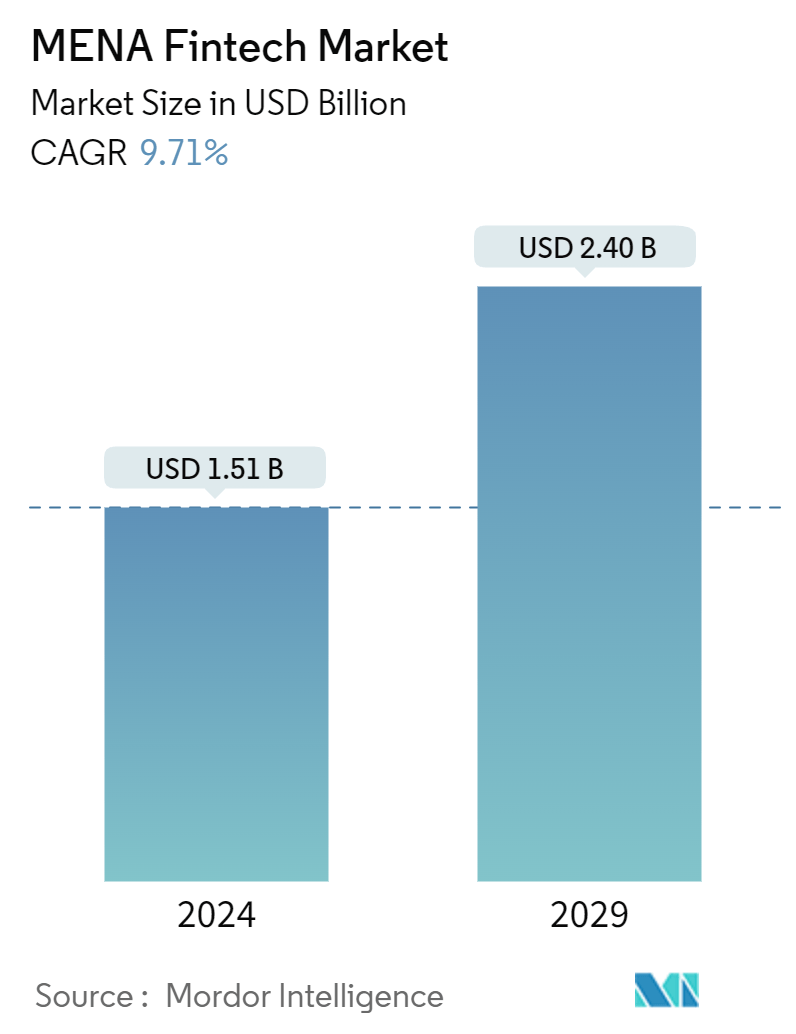
| Study Period | 2020 - 2029 |
| Base Year For Estimation | 2023 |
| Market Size (2024) | USD 1.51 Billion |
| Market Size (2029) | USD 2.40 Billion |
| CAGR (2024 - 2029) | 9.71 % |
| Market Concentration | Medium |
Major Players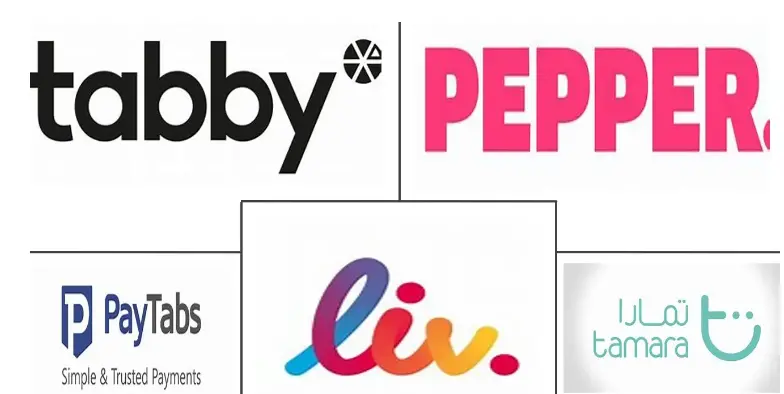
*Disclaimer: Major Players sorted in no particular order |
MENA Fintech Market Analysis
The MENA Fintech Market size is estimated at USD 1.51 billion in 2024, and is expected to reach USD 2.40 billion by 2029, growing at a CAGR of 9.71% during the forecast period (2024-2029).
The Middle East is witnessing a surge in its fintech sector. Payment processors, fintech firms, and platforms are disrupting the traditional financial landscape, penetrating both domestic and global markets. A key driver behind this growth is the region's swift embrace of technology.
According to a report, the MENA region, particularly the United Arab Emirates, Saudi Arabia, Bahrain, and Egypt, is the epicenter of fintech funding. These nations accounted for a staggering 99% of the region's investments. Within the fintech sector, payment solutions took the lead, capturing 42% of all investments and boasting a remarkable annual growth rate of 152%. The report also predicts the launch of over 45 fintech startups, each valued at USD 1 billion or more, in the Middle East by 2030, with Saudi Arabia spearheading this trend.
As of 2023, the MENA region boasted over 250 fintech startups, a number projected to surge beyond 250 by 2025. MENA's robust entrepreneurial ecosystem positions fintech as a key player in tackling the region's pressing financial hurdles.
In the face of a challenging global financial landscape, MENA's fintech industry showcased resilience, outpacing other sectors. Despite a global economic downturn marked by rising interest rates and technological disruptions, MENA's fintech sector witnessed a 47% Y-o-Y dip in total funding, settling at USD 484 million. However, the sector's SEED valuation remained steady, underscoring its stability.
MENA Fintech Market Trends
Rising Digital & Cashless Payments is Driving the Growth of The Market
Across the Middle East, digital payments, cross-border instant payments, BPL (buy-now-later) services, and digital banking reign the market. The MENA region witnesses a surge in digital payments, bolstered by government backing and a push towards a digital economy. Over 85% of fintech firms in the MENA region focus on payment and transfer services.
The entry of global payment giants like Gpay, Apple Pay, and Samsung Pay fueled a surge in the adoption of digital wallets in MENA. Notably, the United Arab Emirates has emerged as a frontrunner in the global shift towards cashless societies. Data suggests that 70% of SMEs in the UAE have already embraced or are poised to adopt cashless systems by 2024.
Recent data from Visa underscores the UAE's pioneering stance in adopting a cashless society. A notable 52% of UAE consumers, outpacing the global average of 41%, are either already embracing or planning to transition to a cashless lifestyle by 2024. Within the e-commerce realm, credit cards take center stage, dominating the landscape and accounting for the majority of transactions. Debit cards, on the other hand, make up 11% of the market, as highlighted by FIS Global Payments Wallet. Additionally, online payments, including mobile wallets, constitute a significant 24% of the total transaction value, solidifying its position as the UAE's second most popular payment method.
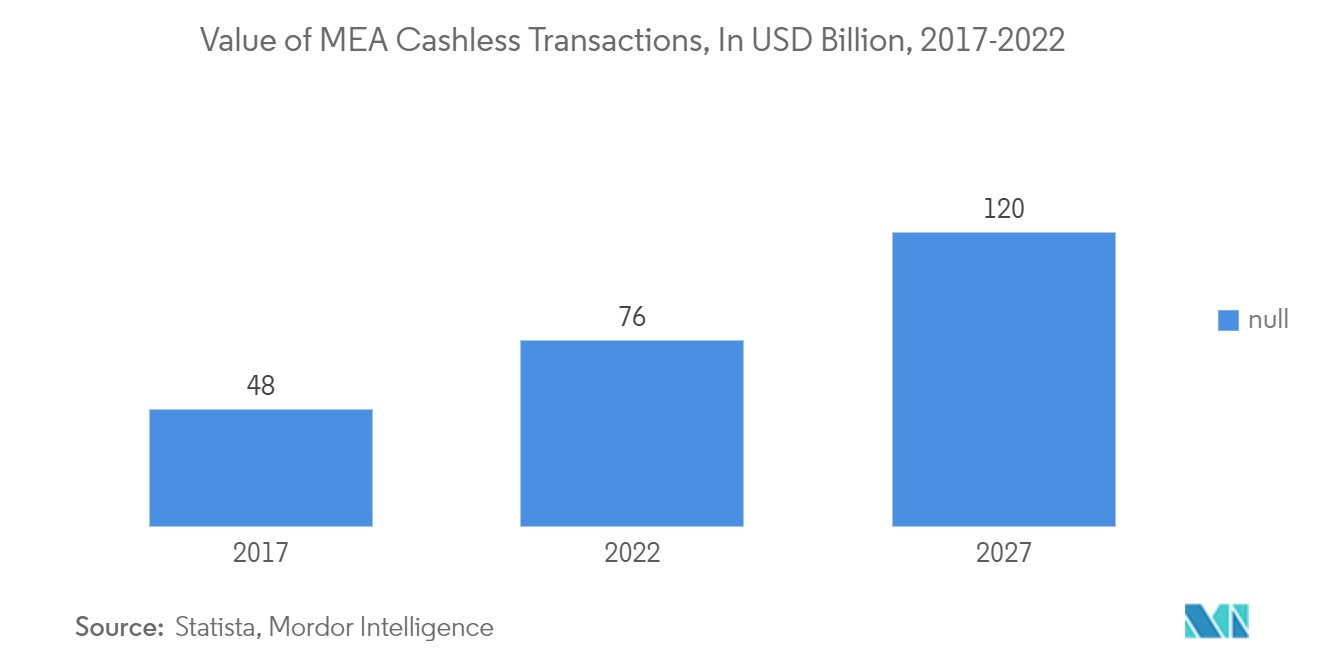
UAE is Dominating the Fintech Market
Investment in the UAE's fintech sector has surged by an impressive 92% in 2024, with projections indicating a doubling of transaction value by 2028. This surge is underpinned by multiple factors, including the UAE's strategic geographic location, a rising appetite for fintech solutions among locals, and its allure for foreign direct investment (FDI).
The UAE government is actively incentivizing green finTech initiatives through tax benefits. This move aims to foster innovation, bolster financial growth, and underscore the nation's commitment to environmental sustainability. The UAE, particularly, is emerging as a favored destination for financial service providers, including cryptocurrency exchanges and FX/CFD brokers. With one of the world's swiftest-growing economies, the UAE's government has embraced policies that champion innovation and attract investments. These measures span tax incentives for foreign investors and targeted ad campaigns highlighting the nation's investment potential and affordable living.
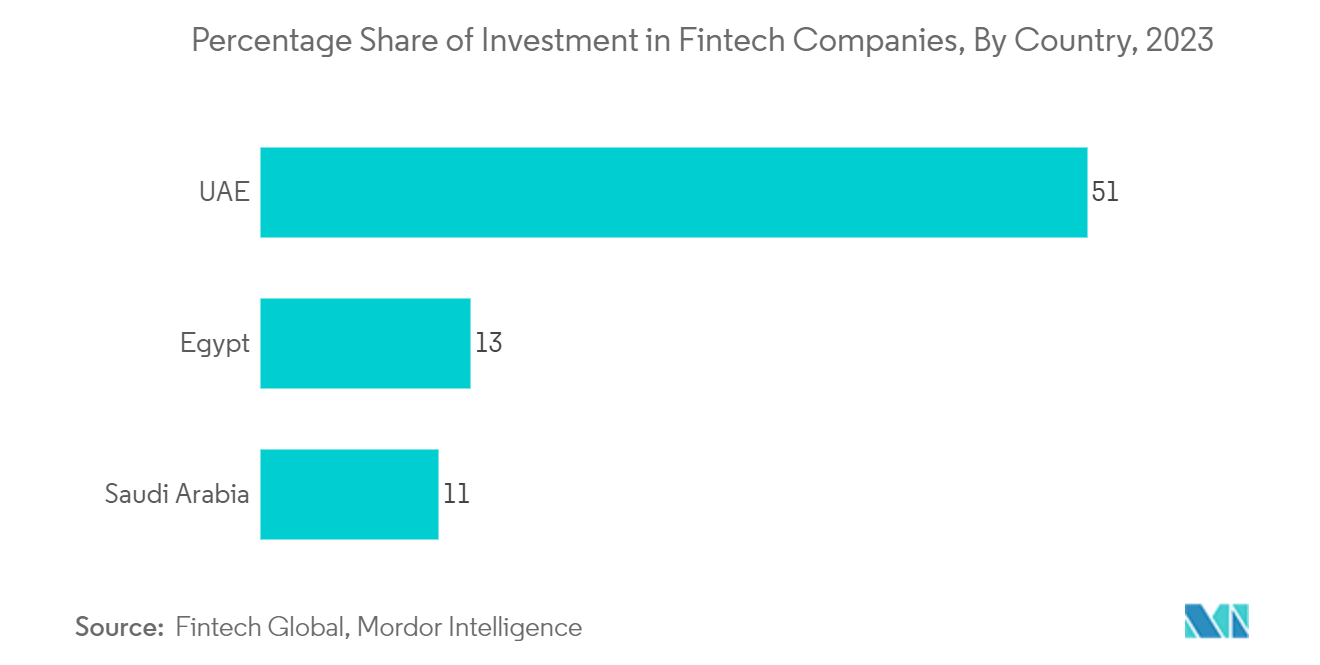
MENA Fintech Industry Overview
The MENA fintech market is moderately fragmented. Companies from all over the world are investing heavily in this segment. In the MENA market, there are many fintech companies with smaller market shares. The adoption of fintech platforms and the need to upgrade to new technology increases the competition among companies. Due to the pandemic and the rise of cities, people started to accept new methods of payment and contactless gateways. Innovation and technological progress accelerated. Some of the major players dominating the market include Tamara, Liv., Pepper, PayTabs, Tabby, and Sarwa.
MENA Fintech Market Leaders
-
Tamara
-
Liv.
-
Pepper
-
PayTabs
-
Tabby
*Disclaimer: Major Players sorted in no particular order
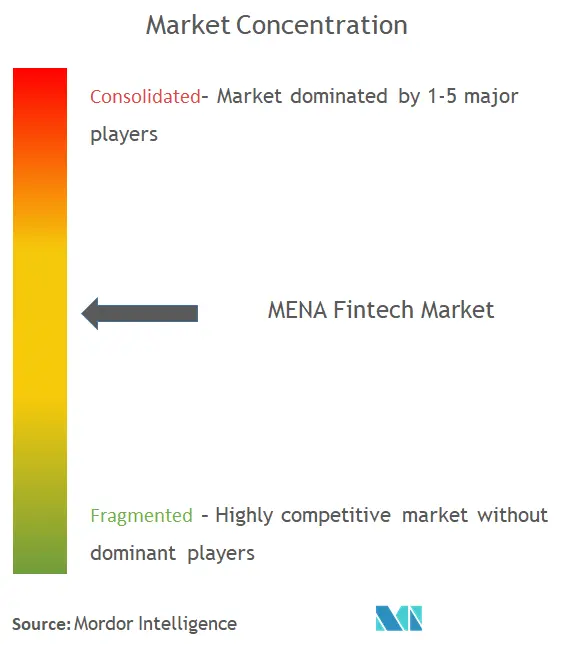
MENA Fintech Market News
- In February 2024, MeasA’s (MEASA) award-winning payments leader, PayTabs, Egypt, announced a strategic partnership with Egypt’s leading BNPL platform, Souhoola. This new BNPL platform will provide merchants with a new way to pay, expanding the variety of online payment options PayTabs Egypt offers.
- In February 2024, MENA’s leading payment orchestration company, PayTabs Group, partnered with Saudi Arabia's leading payment infrastructure as a service fintech brand, Nearpay, to provide users across Jordan and PayTabs' other markets in the region with an enhanced soft POS payment experience.
- In January 2024, MENA’s premier universal financial technology leader, Valu, entered into a strategic alliance with Bosta, one of the leading technological providers of last-mile delivery services in Egypt and in Saudi Arabia. PayTabs Egypt has developed this revolutionary feature to enable the payment of shipments through the IOD feature of the Valu app in Egypt for the first time. This agreement aims to improve the purchasing process and increase the sales of e-commerce companies.
- In March 2023, CoreLogic and Pepper Money, the world’s leading independent property data & analytics provider, entered into a strategic five-year agreement. The agreement covers Australia, New Zealand, and beyond. Pepper Money and CoreLogic have long been partners in Australia, with Pepper Money extending its existing Australian relationship until 2028 and CoreLogic continuing to expand into New Zealand to expand its capabilities and capitalize on operational synergies.
MENA Fintech Market Report - Table of Contents
1. INTRODUCTION
- 1.1 Study Assumptions and Market Definition
- 1.2 Scope of the Study
2. RESEARCH METHODOLOGY
3. EXECUTIVE SUMMARY
4. MARKET DYNAMICS AND INSIGHTS
- 4.1 Market Overview
-
4.2 Market Drivers
- 4.2.1 Customers' Growing Need for E-Commerce and Mobile Banking Platforms
- 4.2.2 Rising Internet Penetration & Adoption of Smartphones will Continue to Lead the Growth of the Market
-
4.3 Market Restraints
- 4.3.1 Data Privacy Concerns
- 4.3.2 Increasing Cybersecurity Risks
-
4.4 Market Opportunities
- 4.4.1 Rising Investments in Fintech Startups
- 4.4.2 Robo-Advisors Will Continue to Grow in the Future
-
4.5 Industry Attractiveness - Porter's Five Forces Analysis
- 4.5.1 Bargaining Power of Buyers
- 4.5.2 Bargaining Power of Suppliers
- 4.5.3 Threat of New Entrants
- 4.5.4 Threat of Substitutes
- 4.5.5 Intensity of Competitive Rivalry
- 4.6 Insights of Technology Innovations in the Market
- 4.7 Insights on Government Regulations and Industry Policies
- 4.8 Impact of COVID-19 on the Market
5. MARKET SEGMENTATION
-
5.1 By Service proposition
- 5.1.1 Money Transfer and Payments
- 5.1.2 Savings and Investments
- 5.1.3 Digital Lending & Lending Marketplaces
- 5.1.4 Online Insurance & Insurance Marketplaces
- 5.1.5 Other Service Propositions
-
5.2 By Country
- 5.2.1 United Arab Emirates
- 5.2.2 Saudi Arabia
- 5.2.3 Bahrain
- 5.2.4 Qatar
- 5.2.5 Iran
- 5.2.6 Egypt
- 5.2.7 Israel
- 5.2.8 Rest of MENA
6. COMPETITIVE LANDSCAPE
- 6.1 Market Concentration Overview
-
6.2 Company Profiles
- 6.2.1 Tamara
- 6.2.2 Liv.
- 6.2.3 Pepper
- 6.2.4 PayTabs
- 6.2.5 Tabby
- 6.2.6 Sarwa
- 6.2.7 Ila Bank
- 6.2.8 Bayzat
- 6.2.9 Eureeca
- 6.2.10 Cwallet*
- *List Not Exhaustive
7. MARKET OPPORTUNITIES AND FUTURE TRENDS
8. DISCLAIMER AND ABOUT US
** Subject To AvailablityMENA Fintech Industry Segmentation
Fintech is one of the most widely anticipated and quickly adopted fields of financial services as people adopt urbanization and smart connectivity. The MENA fintech market is segmented by service proposition and by country. By service proposition, the market is segmented into money transfer and payments, savings and investments, digital lending and lending marketplaces, online insurance and insurance marketplaces, and other service propositions. By country, the market is segmented into United Arab Emirates, Saudi Arabia, Bahrain, Qatar, Iran, Egypt, Israel, and Rest of the Middle East and North Africa. The report offers market sizes and forecasts for the MENA fintech market in terms of value in USD for all the above segments.
| By Service proposition | Money Transfer and Payments |
| Savings and Investments | |
| Digital Lending & Lending Marketplaces | |
| Online Insurance & Insurance Marketplaces | |
| Other Service Propositions | |
| By Country | United Arab Emirates |
| Saudi Arabia | |
| Bahrain | |
| Qatar | |
| Iran | |
| Egypt | |
| Israel | |
| Rest of MENA |
MENA Fintech Market Research FAQs
How big is the MENA Fintech Market?
The MENA Fintech Market size is expected to reach USD 1.51 billion in 2024 and grow at a CAGR of 9.71% to reach USD 2.40 billion by 2029.
What is the current MENA Fintech Market size?
In 2024, the MENA Fintech Market size is expected to reach USD 1.51 billion.
Who are the key players in MENA Fintech Market?
Tamara, Liv., Pepper, PayTabs and Tabby are the major companies operating in the MENA Fintech Market.
What years does this MENA Fintech Market cover, and what was the market size in 2023?
In 2023, the MENA Fintech Market size was estimated at USD 1.36 billion. The report covers the MENA Fintech Market historical market size for years: 2020, 2021, 2022 and 2023. The report also forecasts the MENA Fintech Market size for years: 2024, 2025, 2026, 2027, 2028 and 2029.
MENA Fintech Industry Report
Statistics for the 2024 MENA Fintech market share, size and revenue growth rate, created by Mordor Intelligence™ Industry Reports. MENA Fintech analysis includes a market forecast outlook to 2029 and historical overview. Get a sample of this industry analysis as a free report PDF download.



